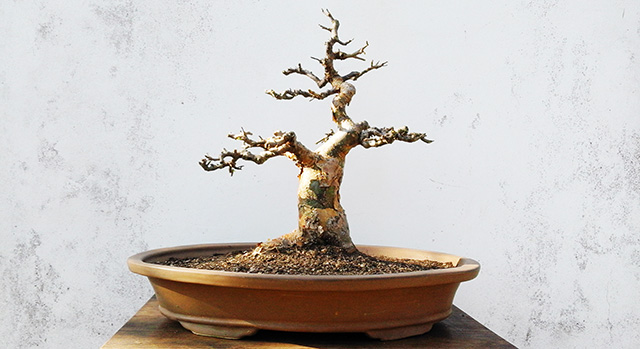The Essence of Style

Beautiful bonsai are the essence of style. Bonsai is an art form where the artist makes use of living plant material to create a beautiful visual presentation. Bonsai are not exact miniature versions of full-sized trees. We use full-sized trees as inspiration for our artwork but, we are never able to “copy” them accurately.
If we had an amazing machine that could make a beautiful bonsai the same size as a full-sized tree it would look outlandish. It might only have three branches where a full sized tree would have hundreds. Its leaves would be enormous, the size of surfboards.
If we did the opposite and shrank a large tree down to the size of a bonsai it would look equally incorrect. Its branches would be as thin as a hair, and the leaves the size of pinheads.
When an artist paints a landscape they may emphasise some aspects of the scene in front of them and diminish or even completely ignore others. Perhaps they may remove the telephone poles and paint the scene as it might have looked a hundred years ago. Artistic interpretation. In the same way, a bonsai artist must interpret nature.
Very often, a beautiful style or design comes from removing stuff rather than adding stuff. Creating a stylish bonsai is a process of removing the branches that do not help the design. We must distil the essence to achieve the style. Less is more.
The wow factor is the Essence of style
Spend some time on the internet looking at bonsai trees. There is no end to the wide variety of stunning trees. Make a note of which ones really attract your attention. Very often they will be the trees that don’t have very much foliage, but have beautiful wood and branches. The trees that have a lot of foliage may look very impressive, but they seldom have the “wow” factor. There are various reasons for this.
Just from a purely aesthetic point of view, wood is visually more attractive than foliage. A basic principle of bonsai is to enhance the beautiful and hide the not so beautiful. We remove as much of the foliage as is necessary to allow the viewer’s eyes to see the wood. As a result, a bonsai where one can see lots of wood, mostly the trunk, looks impressive.
Old trees have fewer leaves.
One of our main goals in bonsai is to style a tree that looks old, even if the tree is relatively young. Old trees tell stories. In the wild, old trees that have endured all that nature can throw at them, are able to survive on a relatively low supply of nutrients. Their roots go deep and they have enormous amounts of energy stored in their cells. Old trees do not need a large number of leaves. So, to make your bonsai look a lot older, start by removing a lot of the foliage.
Minimalism – The essence of style
This minimalist approach to styling applies to the soil and ultimately the pot as well. Any plant that is not part of the design should be removed. This means all weeds, obviously, but also little tufts of grass. Novices tend to leave strange little “things” growing in their bonsai pots thinking that they look “nice”. They don’t! Your tree or trees are the hero of your story. Anything else growing in the pot will distract the eye and detract from the overall aesthetics. In addition, these weeds and grasses rob your tree of nutrients, AND, their roots will clog the soil and eventually block the drainage holes. This will put undue stress on your tree.
Saikei
“But I have seen lots of bonsai with grasses and varied tree species, and even some with little imitation lakes and rivers made with glass and mirrors.” I hear you say. Technically these are not termed bonsai, they are called saikei or miniature landscapes. Saikei can often be as stunning as bonsai and many bonsai artists do both. Often the separation between the two is blurred. Where bonsai often employ minimalist styling, sakei go in the other direction. The challenge is how much stuff can one get into a flat tray or container and still create a balanced and visually engaging composition. However, saikei are carefully composed using specifically chosen plants and ornaments. They do not evolve simply because the artist is too lazy to weed his or her bonsai.
To gain an appreciation of the essence of style visit Bill Valavanis’s blog, or just search for bonsai or Saikei on Google.
Till next time, keep growing – Gary
